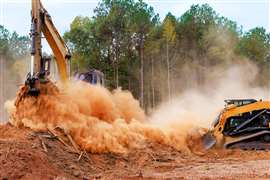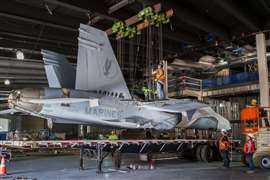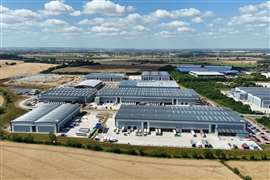Asian opportunities
20 March 2008
The Asian construction market will offer a US$ 1.4 trillion opportunity in 2007. The regional economy entered 2007 with a significant tailwind behind it, exhibiting its strongest growth in over a decade, fuelled by strong external demand, low real interest rates, and rising productivity levels.
Aggregate growth is centred on the region's giants, China and India, which accounted for around 70% of the region's expansion in 2006 (excluding Japan). The deepening regional production chain, anchored on mainland China, has added further impetus to growth – trade between China and East and South-East Asia is estimated to have more than tripled over the past decade.
Exports will continue to drive growth, although external demand is expected to moderate as momentum cools in the US and China. However, on the up-side, some counterbalance will be provided by strengthening in Europe and Japan.
The growth in exports has shown itself to be resilient in the face of recent rapid currency appreciation, thanks to strong productivity gains. Indeed, regional exports, largely of manufactured goods, have driven the demand for new plants and warehouses.
Non-residential construction accounts for nearly 40% of the region's construction spending and has been the fastest growing segment. Expanding trade, both within and out of the region, indicate that this will remain the leading construction segment over the coming years. Manufacturing facilities account for about two thirds of new non-residential spending, although the region's rapidly maturing economies boast fast growing financial and business services, which will lead to a double digit surge in new office construction over the next five years.
Infrastructure investment is also high in Asia, accounting for over 40% of construction spending, as highways, airports and rail are required to get exports overseas, power needs to be generated for offices, plants and an expanding population and a growing and moving population requires water, sewer and other infrastructure and utilities services. The one exception is Japan, where difficulties in this large construction market in the early part of the decade pulled down the growth figure for the region as a whole. The forecast is for continued improvement in Japan, augmenting the robust outlook for China, India and other rapidly expanding economies.
Country view
Even in a region experiencing strong growth, there can be diffierent circumstances, from country to country, and one must evaluate markets individually to determine the opportunities. A useful way to evaluate relative potential is to compare spending growth to risk.
In construction, business risk is a combination of economic factors – interest rates, currency devaluation, inflation etc. – and business risk – ability to enforce contracts, repatriate earnings, protect patents and so on. Global Insight has incorporated these and other factors into a construction risk score. In the second chart, the lines correspond to the average forecast growth in constant dollars and risk score in the region. The size of the bubble corresponds to the relative size of the construction market.
In the long run, higher risk countries need to offer high reward to attract investment, as is true for China, India and Vietnam. Similarly, established economies can offer safety with less reward, such as Japan and Australia. Of particular desire are markets, such as Hong Kong and Korea, which offer above average growth with below average risk.
Conversely, one should carefully consider the business rationale when entering countries with below average growth but above average risk. For example, Thailand suffers from high interest rates and protracted political uncertainty. But the risk situation is also improving in some countries. Expansionary budgets and easing interest rates may improve the situations in Indonesia and the Philippines, and it should be noted that the risk is relative, and most of the countries above have what could be considered acceptable risk. IC




